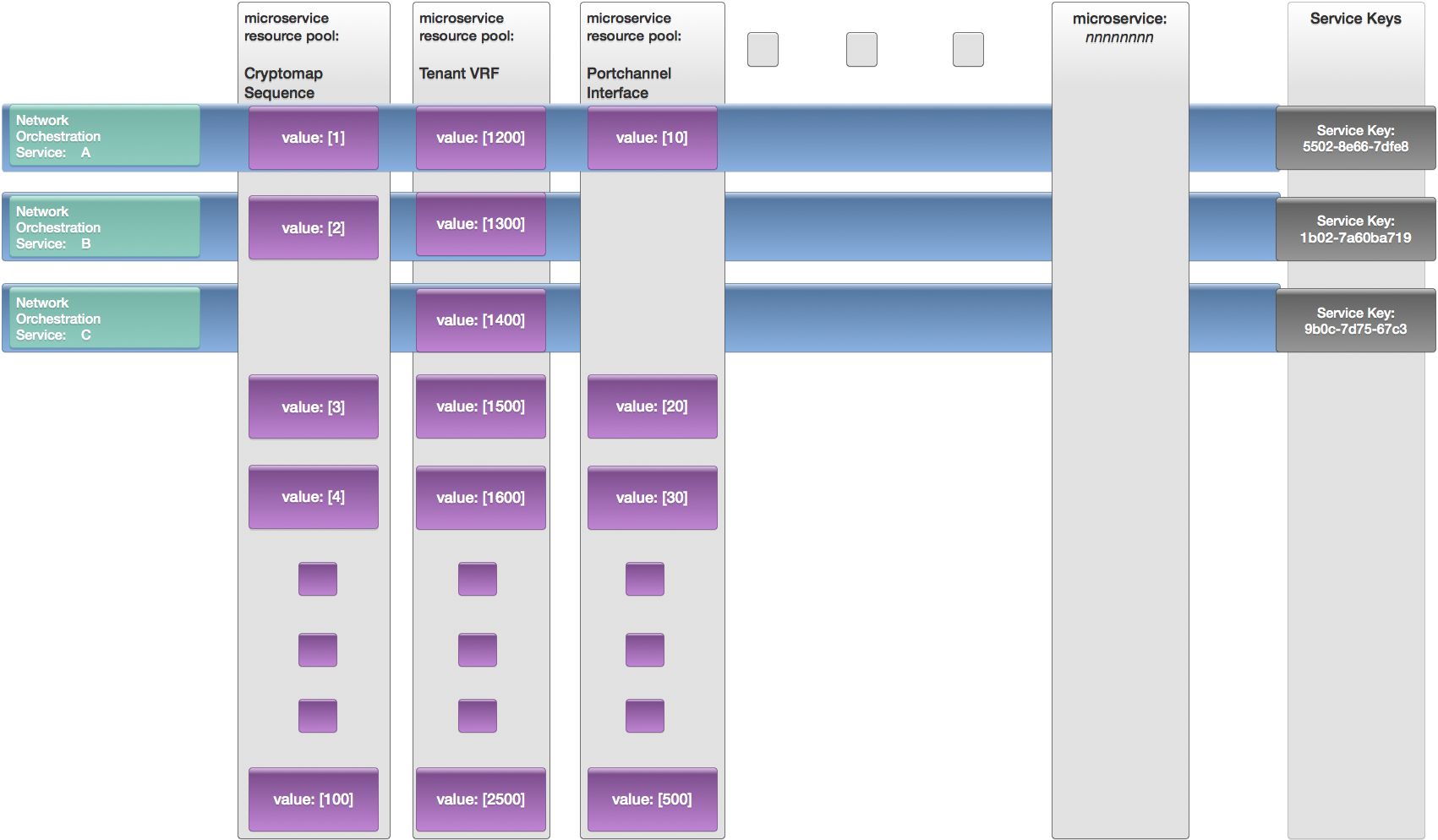The need for a stateful variable tracker and an implementation example
28 Dec 2016When it comes to automation role models, network engineers have often looked up, to our compute brethren. For decades, compute admins have had tools that allowed them to execute scripts on systems at particular times: typically backups, rsync etc. More recently, in the VM universe, DevOps tools like Chef/Puppet/ Ansible, have empowered ‘Developer Administrators’, to stand up the entire app stack, automatically.
In my network automation journey, I realized early on that, a big gap/obstacle for network automation is the need for a backend, to track positive integers; a source of truth, that knows what numeric value was last
assigned to a particular network service(viz. firewall contexts, vlans etc for a 3 tier app in the DMZ. Traditional networks are relatively static(from a configuration standpoint). We typically make incremental changes to variables in a production network configuration. For instance, once a port-channel is created, say Po101, we typically have some internal standard as to how the next port-channel will be numbered (could be Po102, Po201 etc). For a given ‘network service’, we have to track many similar variables: Vlan numbers, Vrf numbers, HSRP group numbers, subinterface numbers, AS numbers…. The list goes on. Now, in quick contrast, the compute folks have almost never had this problem. Most automation in that space is:
- Stand up the VM
- Install necessary middleware
- Clone the app repo
- Fire up the app
- Ensure compliance
What about IP addresses:
Obviously, I am oversimplifying a bit, but the point remains that, there really isn’t much state tracking, when it comes to application/OS admin automation. Back in the day (actually, less than 10 yrs ago), I remember when compute/application admins were very fond of static IP addresses. That used to be ‘stateful’ variable they needed tracked. Not any more. Unfortunately, on the network side, we are still very dependent (depending on the use case) on static IP addressing for our devices. Needless to say a solid IPAM is an extremely important stateful variable tracker for network automation. The reason for this blog post is, however, to address the “other” variables (vlan numbers, vif numbers et al), we need for network automation, that doesn’t really come built into standard, ‘network focused’ software, like IPAMs/CMDB
An implementation example using NSoT:
NSoT is an opensource IPAM(primarily) from the folks at dropbox. Last year at the NetDevOps workshop at Interop, Jathan demo’ed the product. It had 2 things that caught my attention:
- It was written with an API first approach
- It was written in python (a language that I am least uncomfortable in :) )
I forked the repo and implemented the “Iterables” API, with a lot of guidance and support from Jathan. We have since, internally, used my implementation of NSoT, to prove out quite a few automation scenarios.
Iterables - A visualization:
My implementation of the stateful variables, involves 2 tables. One table tracks the variable that needs to be iterated (vlans numbers, vif numbers etc, along with the increment value). The other table tracks all allocated values for a given variable. My good friend Bobby Outlaw helped visualize the idea as follows:
Using NSoT as a backend, the above drawing visualizes various network automation services, within a service provider. Service A requires the network automation system to keep track of a cryptomap sequence number, tenant VRF number and a portchannel interface number. Alternatively Service B requires the automation system to track the cryptomap sequence number and the tenant vrf number. Each time we invoke the “playbook” for service A, we can now make API calls to our NSoT backend, that will give us the next available unused integer for the given variable. This particular implementation, also gives you an unique “Service Key” each time you invoke the playbook. The idea behind it is; as a service provider, you hand over the unique key to your customer as a reference to the service request. If the customer wants the service revoked or modified (pretty much any CRUD operation) at a later date, the service key can be used to identify all the values associated with a particular service, and thus modified.
Demo Playbook:
If you’d like to play around with the implementation, you can download a copy here. Please keep in mind that you will have to follow the developer guide to compile from source. (Hopefully once the PR is approved, it should be available for general consumption, directly from pip). Once you have NSoT running, you should be able to grab the iterable test playbook to get an idea of how to use the stateful backend for your automation playbooks.
Twitter: Share it with your followers or Follow me on Twitter!
